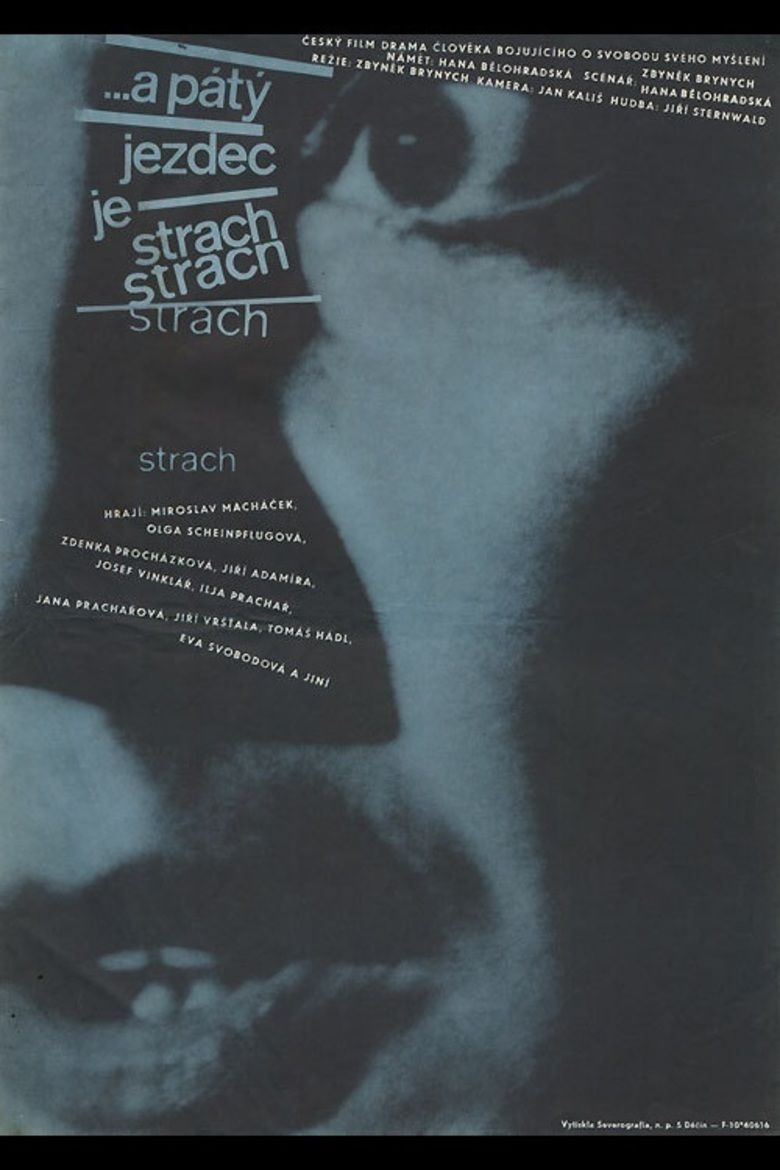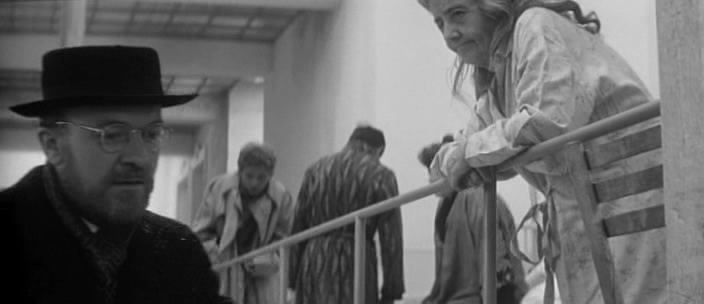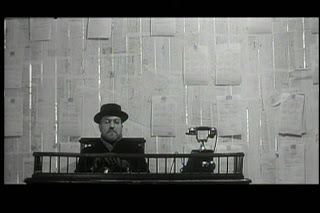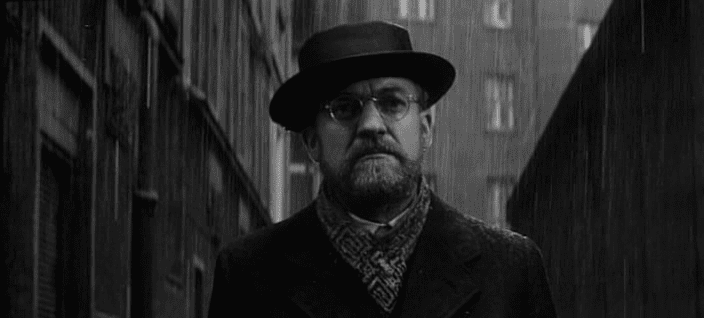The Fifth Horseman Is Fear
7.4 /10 1 Votes
Director Zbynek Brynych Country Czechoslovakia | 7.2/10 IMDb Duration | |||||||||||||||||||||||||||||||||
 | ||||||||||||||||||||||||||||||||||
Release date 6 May 1968 (1968-05-06) Writer Milan Nejedly (technical screenplay), Hana Belohradska (prose Bez krasy, bez limce), Hana Belohradska (screenplay), Zbynek Brynych, Ota Koval, Ester Krumbachova | ||||||||||||||||||||||||||||||||||
The fifth horseman is fear
The Fifth Horseman Is Fear (Czech: A pátý jezdec je strach) is a 1964 Czechoslovak New Wave film about the Holocaust that was directed by Zbyněk Brynych. Instead of depicting gas chambers and concentration camps, the film examines the subtler but equally debilitating mental effects of oppression. Restricted by Stalinist censorship, Brynych's uses Nazi fascism as a metaphor to speak out against Soviet communism, highlighting the evils of both oppressive regimes. When it was released in America in 1968, the film was highly praised by critics. Time magazine said it was a “superlatively photographed film," and Roger Ebert wrote, “A nearly perfect film...beautiful, distinguished work. I imagine it will win the Academy Award for the best foreign film.”
Contents

Plot

Set in Prague during the Nazi occupation, the film follows Dr. Braun, a Jewish doctor forbidden to practice medicine who instead works for Nazi officials cataloging confiscated Jewish property. All Braun wants to do is survive, but his pragmatic mentality is challenged when an injured resistance fighter stumbles into his apartment building. A quest for morphine leads Dr. Braun through his tortured city, where fear eats away at the social structure.

Superficially, the city might appear to be normal, but hallucinations, awkward outbursts, and nervous, self-conscious behavior make it clear that society is falling apart. Although images of the Holocaust are never seen, its devastation is understood through an overarching sense of destitution and fear. As Dr. Braun travels through the seedy undergrounds of Prague and back up to his apartment building—where a long winding staircase connects the lives of all his eccentric neighbors—a wide variety of personalities are introduced to the screen, each of whom appears equally as tortured.

With minimal dialogue and a creeping pace, the sense of impending doom never leaves the screen. Crying babies, heavy shadows and broken records set a consistent tone of nightmarish anxiety. Drawn frenetically from the dancehall, where beautiful young couples bob and empty Champagne glasses litter the tables, to the apartment building of a former piano teacher that's stacked high with sheet music and out onto the empty cobblestone streets, the audience is never allowed to feel at ease.

Brynych blurs the line between Nazism and Soviet communism to comment simultaneously on both. The KGB, dressed in sharp suits, look more like the Gestapo than German soldiers, and the film makes no distinction between Jews and Gentiles. As a result, everyone in Dr. Braun's apartment building is under suspicion—everyone is fearful.

The film is scored with discordant piano music and full of expressionist cinematography. At the beginning, the camera follows Dr. Braun through his work, where exaggerated shots lend themselves to symbolic interpretation. For example, in one scene, Dr. Braun stands silently in front of a wall full of ticking confiscated clocks. Clocks serves as a symbol for time; and the Jews who lost their clocks also had their time on Earth taken from them.
Later, short choppy shots of the doctor's home work act as exposition. A small pile of books and an empty jar of milk hint at poverty and intellect. His neglected violin suggests passion and creativity that's been suppressed; and his small bedroom window, which shows a solitary smoking chimney, subtly alludes to the horrors of the Holocaust.
Towards the end of the film, a voice from the radio, declares in a monotone voice, “The longer the war lasts the greater is our faith in the final victory.” Not a voice of hope, Brynych’s film sends out a message of despair.
Reception
In Roger Ebert's late 1960s review of the film he wrote, “It comes as a shock, in the last ten minutes, to discover how deeply involved you have become. [It is] unmistakably the work of a master, and I can only wonder whether Brynych has made other films or if his ability is natural, as Fellini seems to be. I mention Fellini because this film seems to have what Fellini and very few other directors are able to achieve: A sense of rhythm."
More recently, the Independent Film Quarterly wrote, “The Fifth Horseman Is Fear stands for a brief moment in the early 60's, the communist government of Czechoslovakia experienced a cultural thaw known as The Prague Spring. Barreling into the breach was a bevy of artists including playwright and future Czech president Václav Havel and filmmakers such as Miloš Forman, Jan Němec, etc. A virtual wellspring of new, innovative films sprung forth during this moment of cultural freedom and invention. However, as Soviet tanks rolled in and deposed the more liberal regime in place, so the doors shut on the Czech New Wave itself and many of its films were forgotten. It is our luck though that these films are beginning to resurface, and The Fifth Horseman Is Fear is a great example of why these titles are worth looking at now.”
Trivia
References
The Fifth Horseman Is Fear WikipediaThe Fifth Horseman Is Fear IMDb The Fifth Horseman Is Fear themoviedb.org
